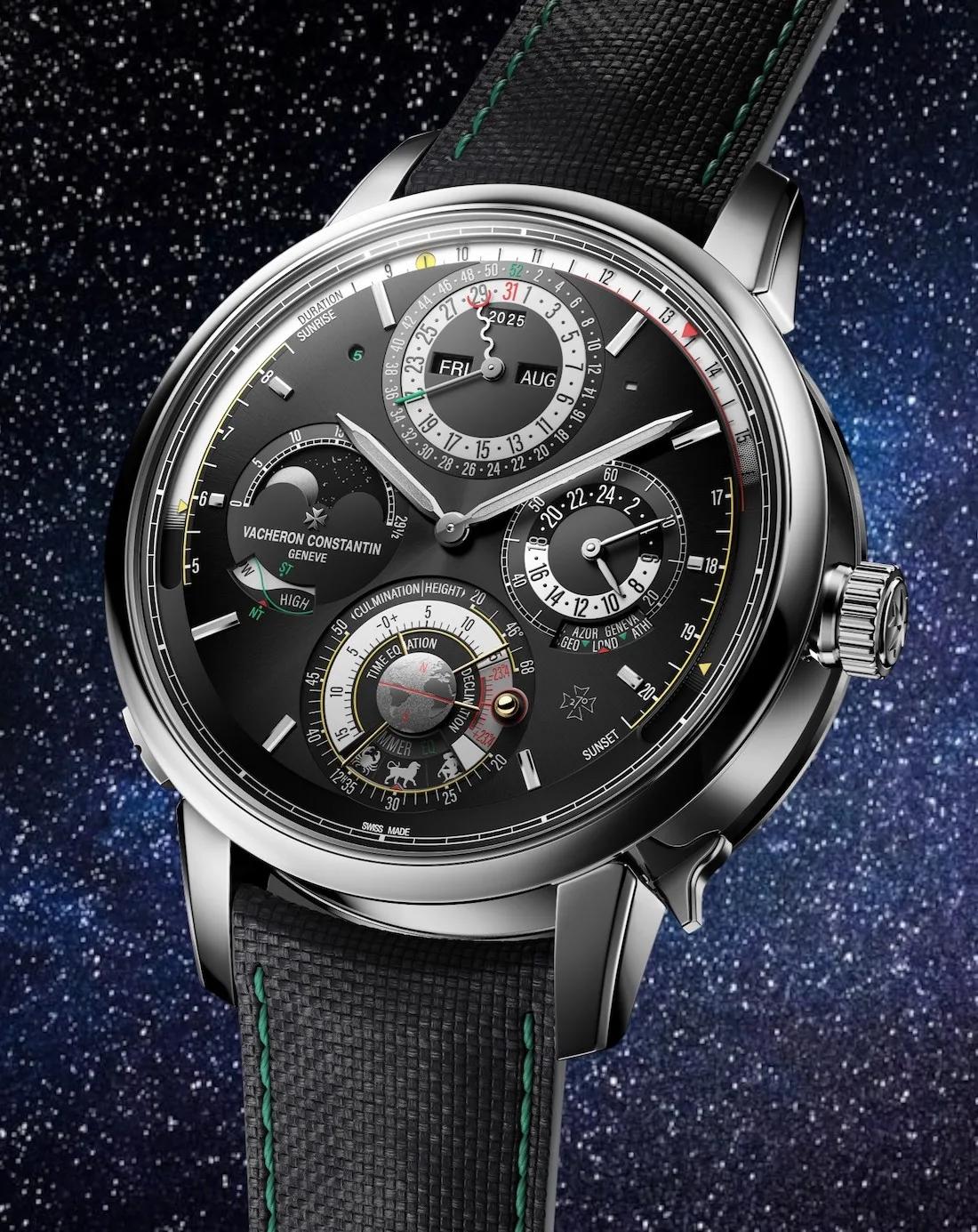In just six years’ time, it’ll be a century since Swiss watchmaker Louis Cottier – in response to increasing use of transcontinental trains, ocean liners and passenger-based aviation –created a timepiece whose rotating and fixed rings reflected the world time-zones which had been established in 1883.
Since then, international transit has not only been democratised, but become a necessarily evil to many – and yet, the sheer romance of having how the earth’s rotation affects the time in major cities around the world hasn’t diminished one iota. Just ask those among the 55,000 visitors to this year’s Watches & Wonders trade fair in Geneva who visited Nomos Glashütte, and pored over the German manufacture’s latest upgrade to the Club Sport Neomatik: a Worldtimer function.
Most would-be owners will choose between a silver or dark blue dial, framed by a 40.5mm diameter (9.9mm thick) stainless steel case. There are also six limited-edition (175 pieces each) versions whose dials are in “Canyon”, “Dune”, “Glacier”, “Jungle”, “Magma” and “Volcano”: a chromatic mini-sequel to the 31-colour Tangente 38 Date collection the brand launched at Watches & Wonders 2024.



Three of the six new Nomos Glashütte’s Club Sport Neomatik Worldtimers: Volcano, Glacier and Magma
In both the standard iterations, a small red dash at 12 o’clock underlines the city whose time is being depicted, as dictated by the rotating disk bearing city airport codes, with markings on the minute track outlining the differences between time zones (a press of the pusher at 2 o’clock jolts both city disk and hour hand into action). Nestling besides its small-seconds sibling subdial at 6 o’clock, a 24-hour subdial at 3 o’clock (bordered by a day-night colour-coded ring) displays what time it is in the wearer’s place of origin.
Whilst both dials are galvanised and have sunburst brushing, the dark blue’s dial hue stretches to the boundary whilst the silver version’s dial is bordered by a blue ring with a matte finish, adding a touch of sportiness to a facade which is almost miraculously clean, given the amount of information depicted on it (the manufacture has called it “a world-time watch for a new generation of watch lovers”, and will get no quarrel from us).


Detail of the subdial on the Nomos Glashütte Club Sport Neomatik Worldtimer Dune featuring the time at place of origin and of the Magma in the dark, showing its clear legibility.
The Arabic numerals, the indices placed between them, the diminutive complimentary text elsewhere – all have been positioned and proportioned against each other perfectly to maximise legibility and yet minimize clutter. The rhodium-plated central hour and minutes hands, meanwhile, come with Super-LumiNova inserts: again, a soupcon of extra detail doing nothing to make the dial look untidy. The Club Sport Neomatik Worldtimer inevitably boasts sapphire crystals front and back, domed and with anti-reflective coating in the case of the front, with a three-link brushed and polished stainless-steel bracelet (with deployant clasp and quick-release spring bars) completing the aesthetic.
The beating heart within is the in-house calibre DUW 3202: an automatic winding movement with stop-seconds mechanism which, despite being just 4.8mm thick, packs a 42 hours of power reserve (an impressive figure which can in part be attributed to the Swing System – the brand’s in-house escapement and hairspring). It’s also water-resistant: making the red warning ring which indicates whether the crown has been screwed down properly a meaningful touch.

The in-house automatic movement of the new Glashütte Club Sport Neomatik Worldtimer – calibre DUW 3202 – offers 42 hours power reserve and is water resistant.
How many of the pieces will end up being used, for their main complication’s purpose, by modern-day Phileous Foggs and Marco Polos? Probably about the same percentage as that of IWC chronographs which end up on the wrists of actual pilots.
But that’s not the point. These pieces evoke the golden age of travel with elegant modernism: nostalgia, with a contemporary flourish if you will. Along with the technical wizardry of the movement, this is why it was one of the true “Wonders” of this year’s horological extravaganza in Geneva.
Author: Nick Scott
If you like World Timers, you may want to read about the Bovet Récital 28 Prowess 1.

















Show Comments +